Peter Paul Rubens in 10 Paintings
A Baroque master and portraitist of the royals, Peter Paul Rubens is probably best known for his often drama-filled religious and mythological...
Anna Ingram 30 May 2024
Frans Hals, the prominent Dutch Golden Age painter, left an enduring legacy through his exceptional mastery of portraiture. The way he captured the spontaneity and vitality of his subjects revolutionized the genre, making him one of the most influential artists of his time. Let’s delve into the world of Frans Hals and explore his ten most significant paintings, which showcase his unparalleled skill in bringing characters to life on canvas. From intimate portraits to lively group scenes, join us on a journey through the works that exemplify the genius of Frans Hals.
Make sure to pay attention to details; it’s worth it!
Frans Hals was born in 1582 (or early in 1584 at the latest) in Antwerp, Southern Netherlands (today’s Belgium). Hals’ family was among many who fled the Southern Netherlands during the Eighty Years’ War (c. 1566/1568–1648) to the city of Haarlem in the Northern Netherlands, emerging at the time into the Dutch Republic. There, he studied under the guidance of Karel van Mander, who, like Hals himself, was a Flemish émigré.
Immersed in the vibrant art scene of Haarlem, Hals became a member of the local Guild of Saint Luke in 1610, marking the beginning of his successful career as an independent artist. In the same year, Hals married his first wife, Anneke Harmensdochter, the daughter of a local bleacher. Harmensdochter died five years later at age 25, leaving behind two children. Hals remarried two years later with Lysbeth Reyniers, whom he probably met through her father, also a Guild of Saint Luke member.
The artist’s career spanned around 50 years. During this time, he established his studio, where he developed his distinctive style and mentored numerous apprentices and talented assistants, one of them the notable Judith Leyster, who sued Hals in 1635 over their mutual apprentice. It is believed that he taught 60 pupils in total (the number suggested by the latest exhibition catalog). As of today, experts on Hals identified names of 14 artists who worked with him: among them Judith Leyster, Dirck Hals, Adriaen Brouwer, Jan Miense Molenaer, Adriaen van Ostade, Philips Wouwerman, Pieter Gerritsz van Roestraten, Vincent Laurens van der Vinne, Hals’ five sons and Willem Woutersz (who had decamped from Leyster to Hals, as mentioned).
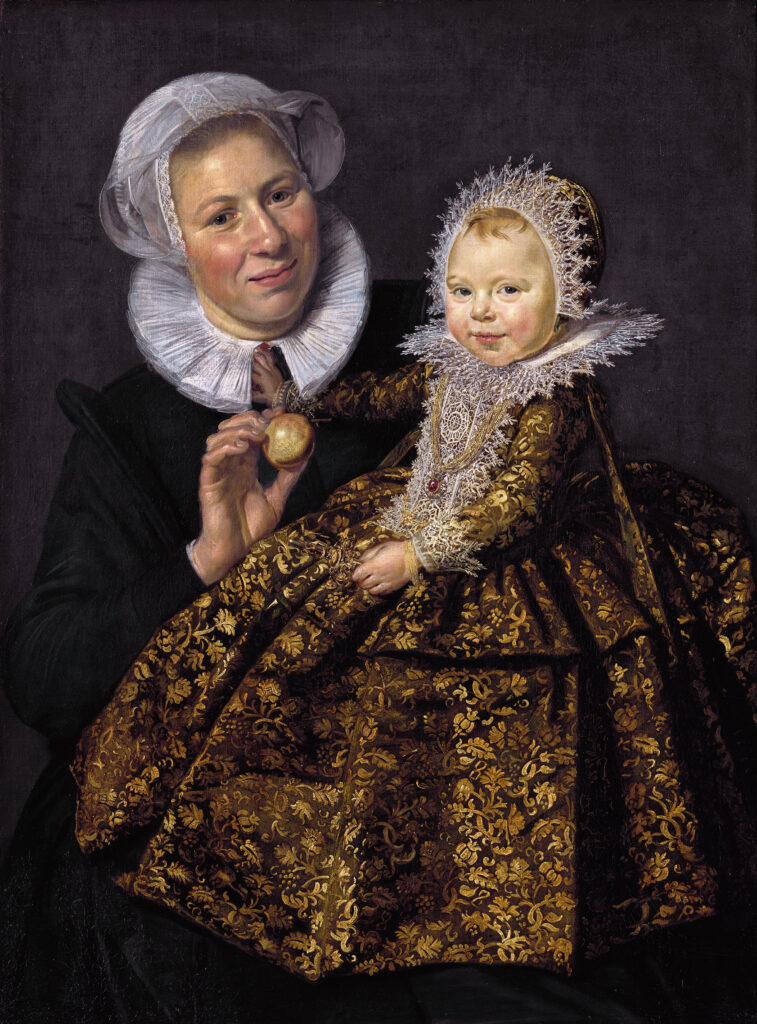
Frans Hals, Catharina Hooft with Her Nurse, 1619-1620, Gemäldegalerie, Berlin, Germany.
Hals specialized in portrait painting, a choice that would provide a steady income but with little space for artistic freedom and development, as he had to conform to his clientele’s demands. In this early work, we see a rare example of a child portrayed with a nurse instead of her mother.
The child was Catharina Hooft, a descendant of a wealthy and influential patrician family of Amsterdam, who later in her life married Cornelis de Graeff, the most powerful regent and mayor in the city. The girl’s social status is showcased through her lavish dress and a silver rattle in her left hand.
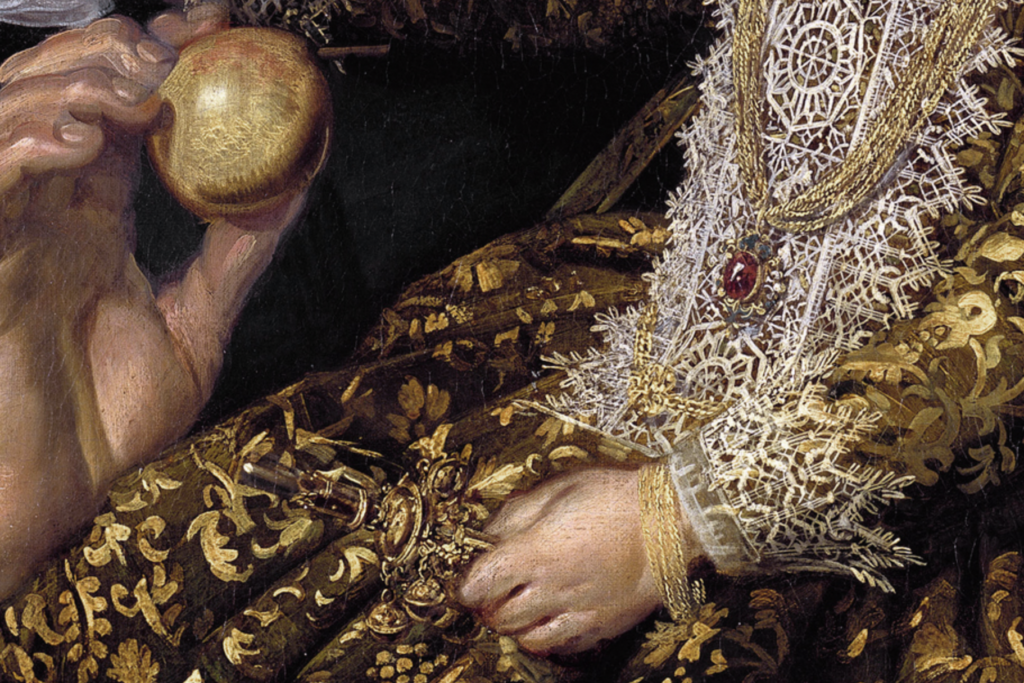
Frans Hals, Catharina Hooft with Her Nurse, 1619-1620, Gemäldegalerie, Berlin, Germany. Detail.
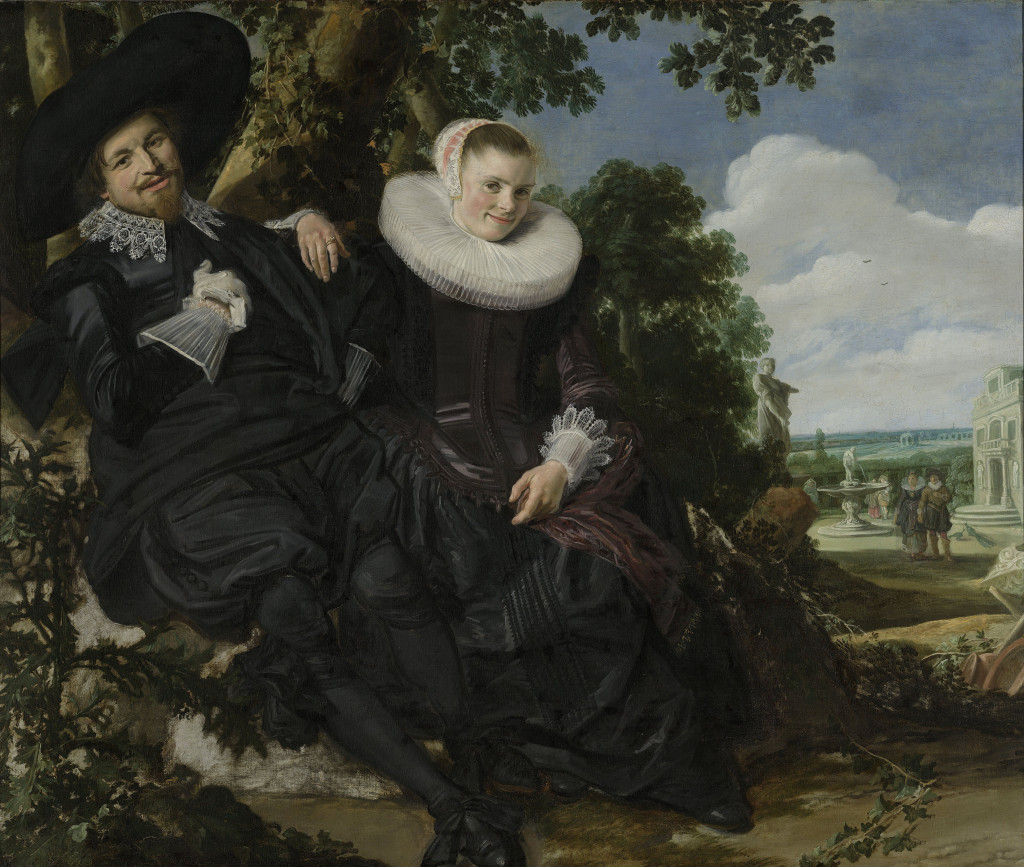
Frans Hals, Portrait of a Couple, ca. 1622, Rijksmuseum, Amsterdam, The Netherlands.
This remarkable portrait of a young smiling couple in an idealist landscape was, in the late 19th century, thought to be Hals himself with his second wife, Lysbeth Reyniers. The idea to include a seated couple in full-length could have come from Peter Paul Rubens’ Self-Portrait with Isabella Brandt in a Honeysuckle Bower (ca. 1609-1610).
Today, the portrait is believed to be a wedding portrait of Isaac Massa and Beatrix van der Laen, who married the same year the portrait was painted.
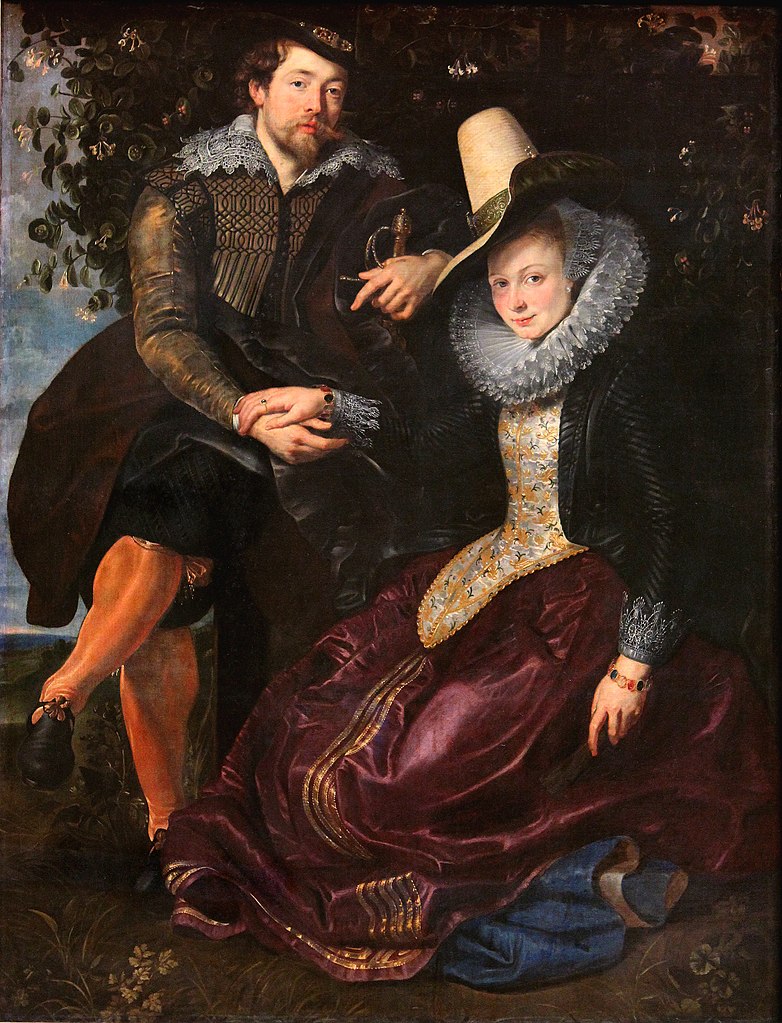
Peter Paul Rubens, Self-Portrait with Isabella Brandt in a Honeysuckle Bower, ca. 1609-1610, Alte Pinakothek, Munich, Germany.
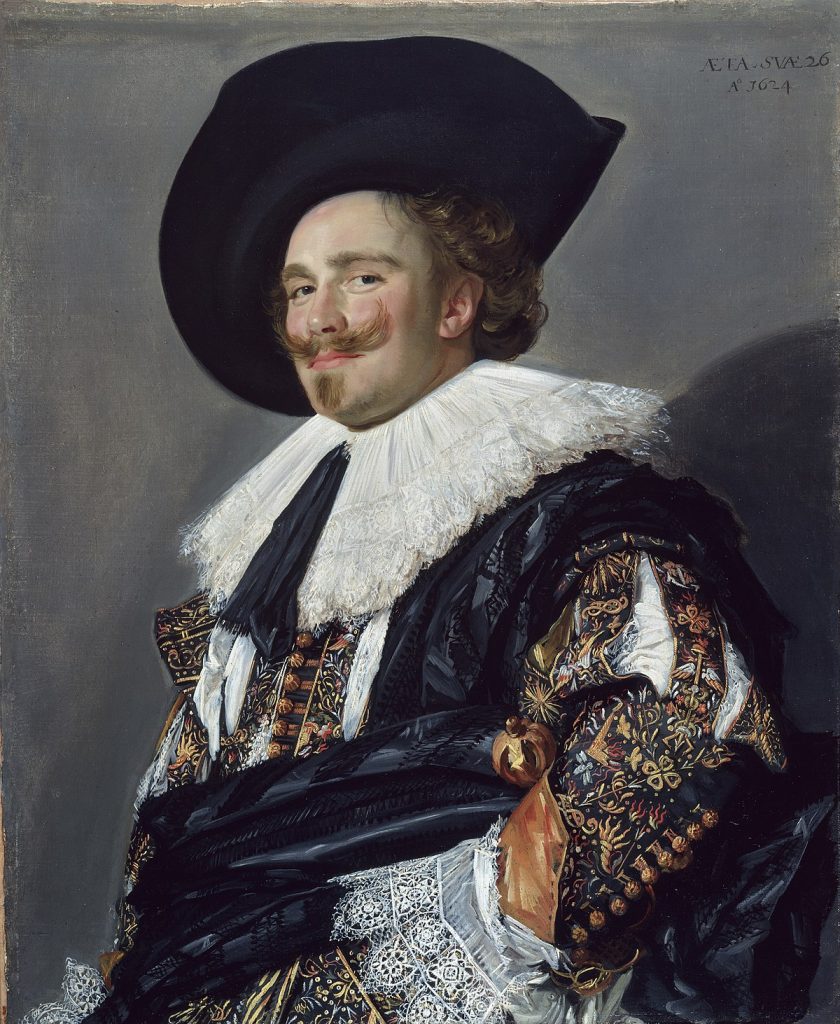
Frans Hals, The Laughing Cavalier, 1624, The Wallace Collection, London, UK.
Throughout the years, Hals remained an excellent portraitist, receiving no complaints from his sitters (which was the case with many of his colleagues). One of his best has to be The Laughing Cavalier.
Hals was one of the very few artists who depicted his sitters smiling or even laughing. In the portrait, a young man looks proudly at the viewer, standing upright with the so-called “Renaissance elbow” directed towards the visual center. Hals’ painterly and compositional genius manifests through his rendition of the subject and his lavish attire with incredible immediacy and vividness, but also through a painterly depth of space in which the young man is framed.
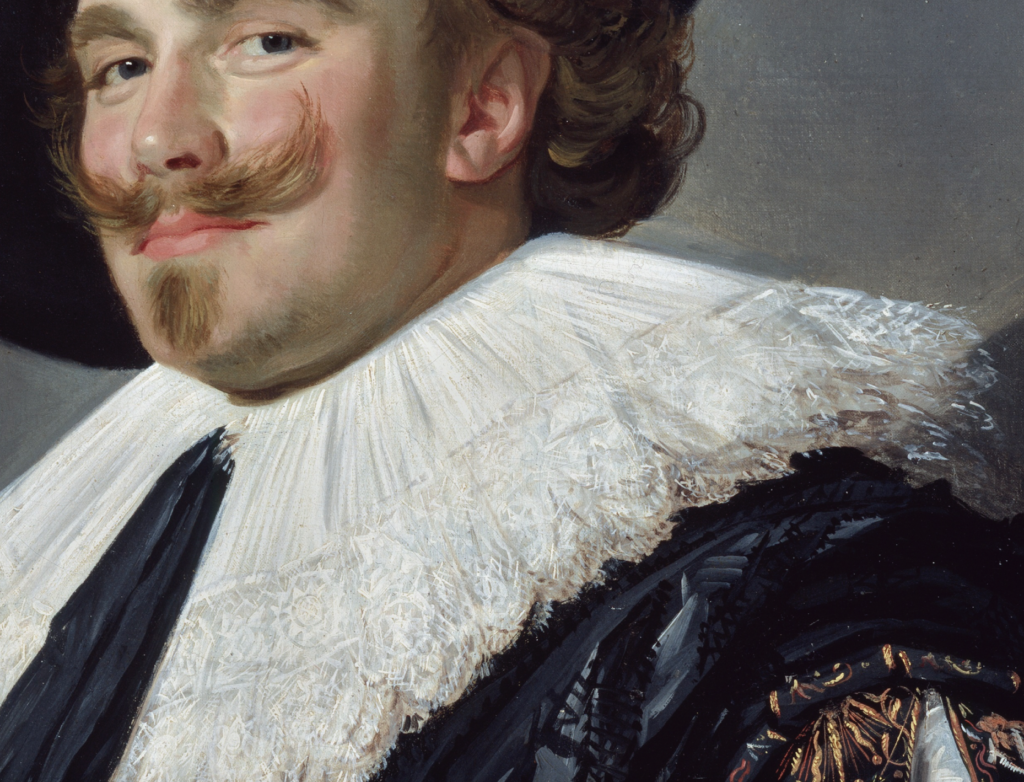
Frans Hals, The Laughing Cavalier, 1624, The Wallace Collection, London, UK. Detail.
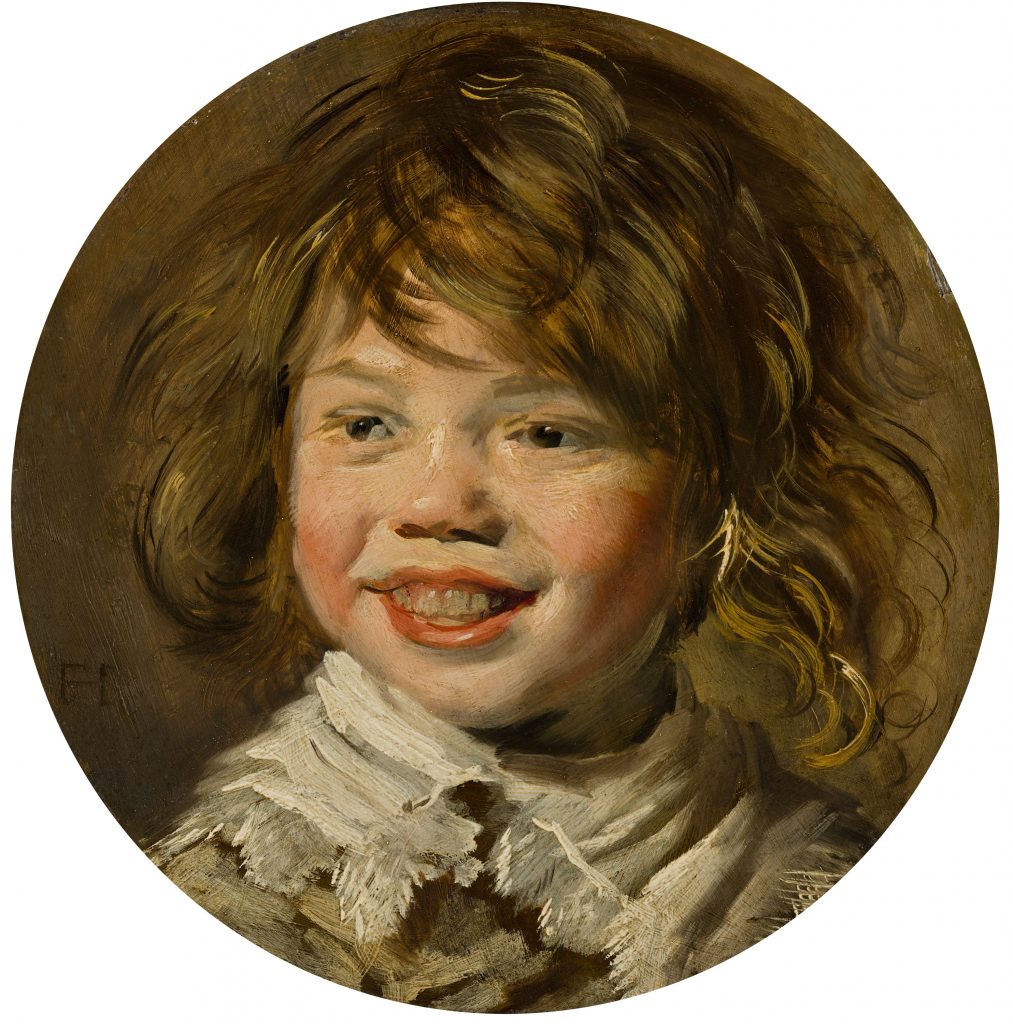
Frans Hals, Laughing Boy, ca. 1625-1630, Mauritshuis, The Hague, The Netherlands.
Laughing Boy is relatively small, featuring a cheerful young boy with disheveled hair. This is not a portrait. It is a tronie – a genre regionally and temporally exclusive in the Dutch Golden Age and Flemish Baroque – you can read more about it here. As laughter was associated with youth, it is no surprise it should appear on the face of a child. However, hardly any paintings can capture such a fleeting emotion as well as this particular study.
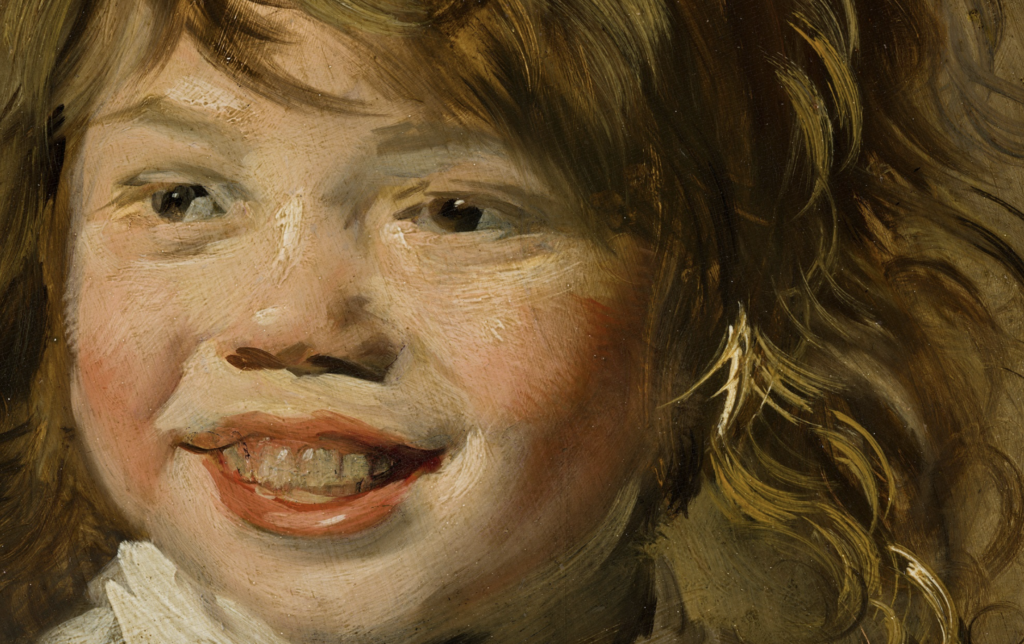
Frans Hals, Laughing Boy, ca. 1625-1630, Mauritshuis, The Hague, The Netherlands. Detail.
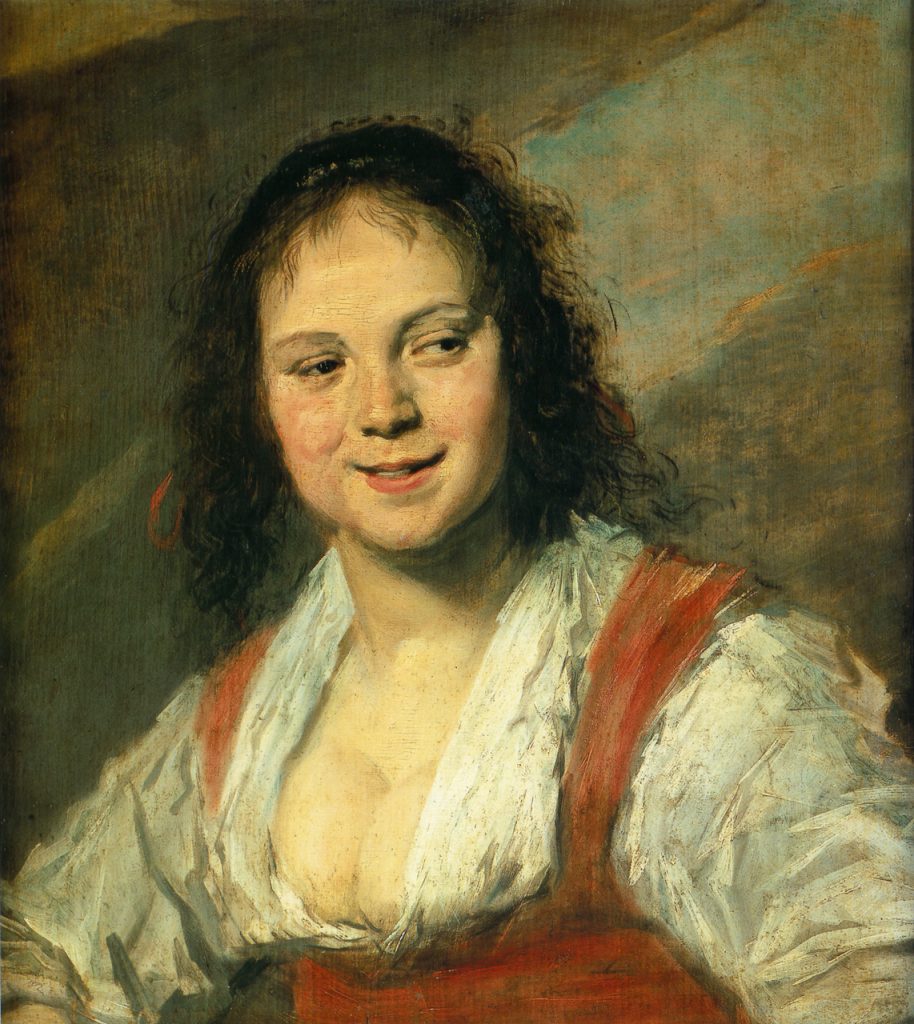
Frans Hals, La Bohémienne, 1626 or ca. 1632, Louvre, Paris, France.
La Bohémienne is a title given to the painting upon her entry into the Louvre collection in 1869. As mentioned, laughter was generally associated with youth, but this standard did not hold for women. Writers of the time warned of “women of easy virtue,” namely sex workers from lower social class; painters often depicted these women with an inviting smile, a confident gaze, and a deep décolleté befitting the male gaze.
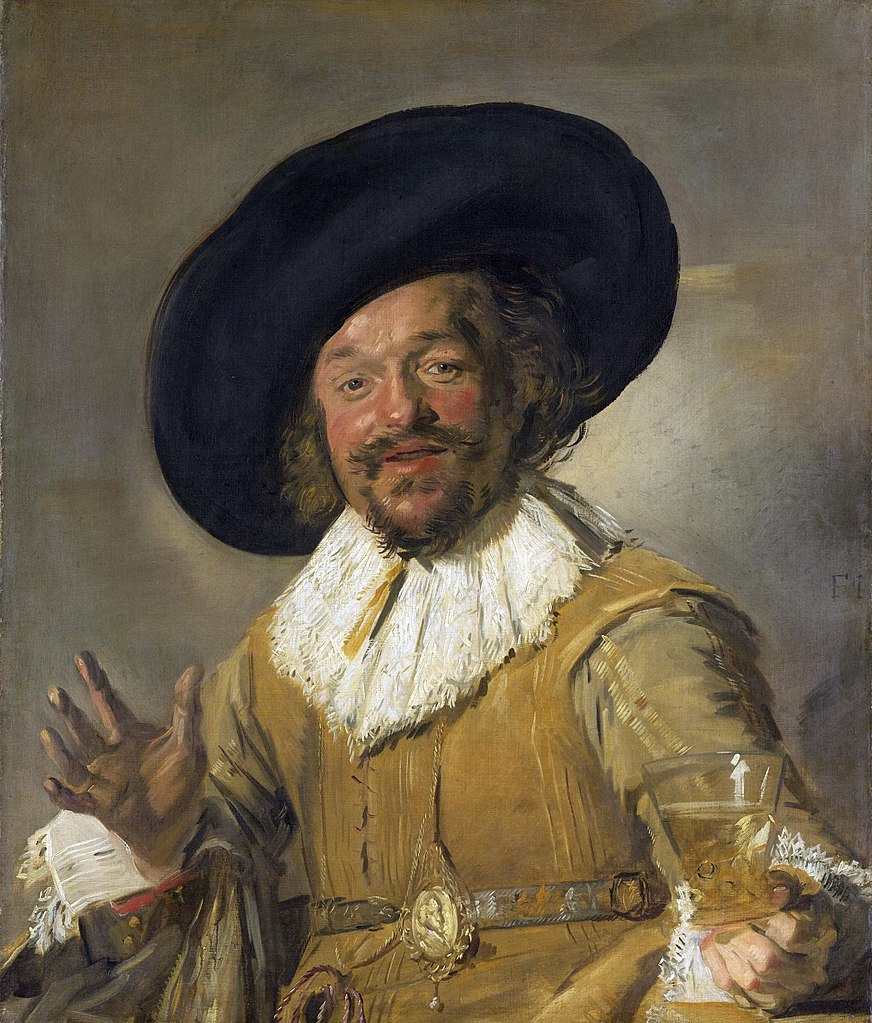
Frans Hals, Merry Drinker, c. 1628-1630, Rijksmuseum, Amsterdam, The Netherlands.
This militia man in the Merry Drinker raises his glass (a Berkemeyer, a glass typically seen in Dutch still lifes) for a toast. Painted with bravura, Hals blurred the boundaries between the genres of a tronie and a portrait, while his brushstrokes added energy to the work. We cannot tell whether this is a real militia man or a character study.
The Merry Drinker paints the man with his face looking relaxed, smiling, and showing his teeth. Unlike La Bohémienne, this man is portrayed in a positive light, perhaps only with a slight mocking undertone concerning his tipsiness.
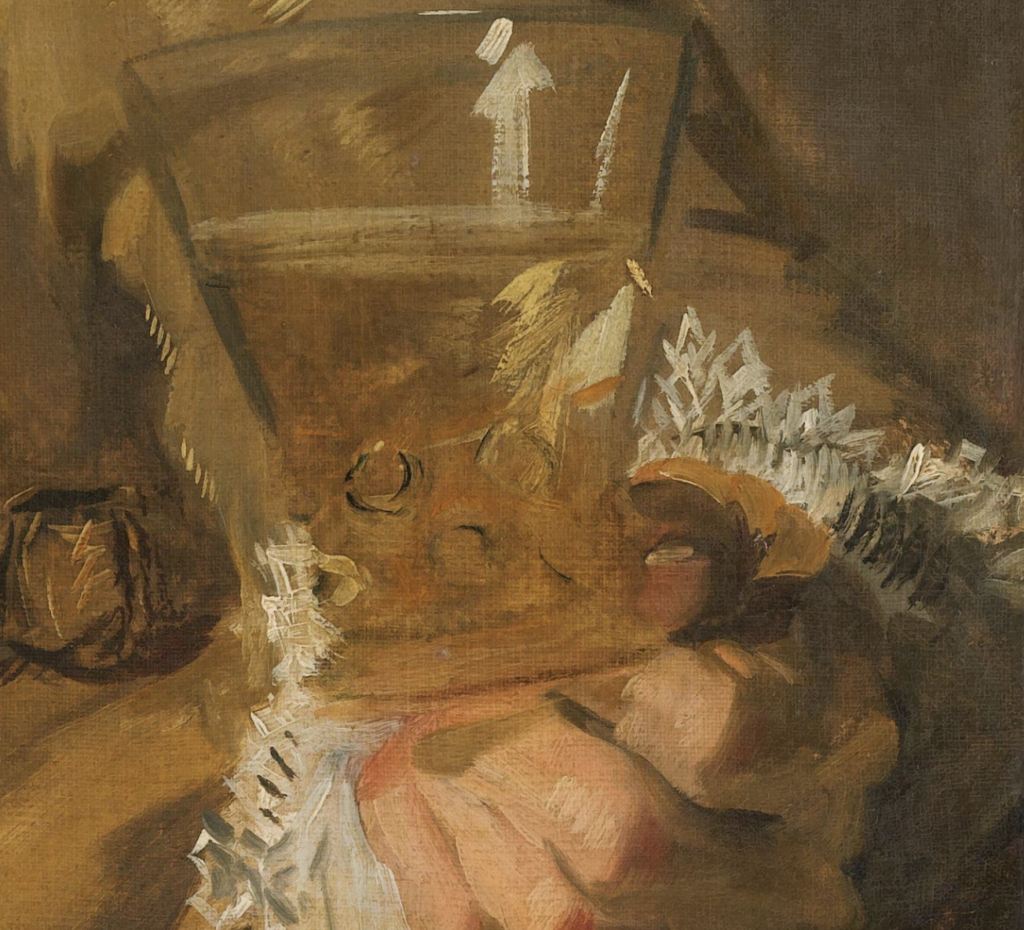
Frans Hals, Merry Drinker, c. 1628-1630, Rijksmuseum, Amsterdam, The Netherlands. Detail.
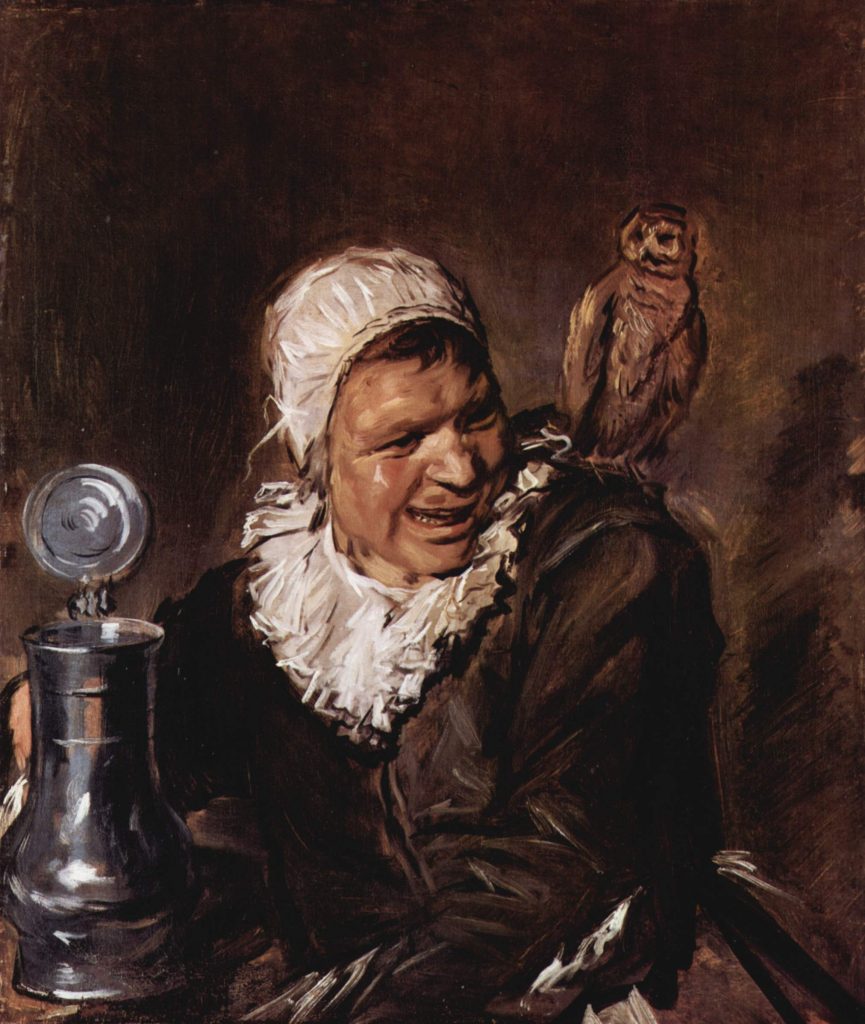
Frans Hals, Malle Babbe, ca. 1633-1635, Gemäldegalerie, Berlin, Germany.
At first glance, one can see an older woman with a comical grimace caught in motion, holding a big beer tankard while an owl sits on her shoulder. Is this a tronie? No. Malle Babbe was an actual person.
Malle Babbe, or Barbar, had been widely known across the streets of Haarlem until 1646, as she was admitted to the local workhouse and spent the rest of her life there. A workhouse was an institution initially meant to confine those financially dependent, mostly beggars, but later, the program extended to all sorts of questionable individuals. Frans Hals must have known the Haarlem workhouse, as four years earlier, his son Pieter and daughter Sara were admitted there, respectively, due to mental disability and immoral behaviors.
We now identify the sitter from the inscription on the stretcher of the canvas. Her image became the personification of foolishness, a topic often visited in 17th-century Dutch literature ridiculing those less fortunate in life.
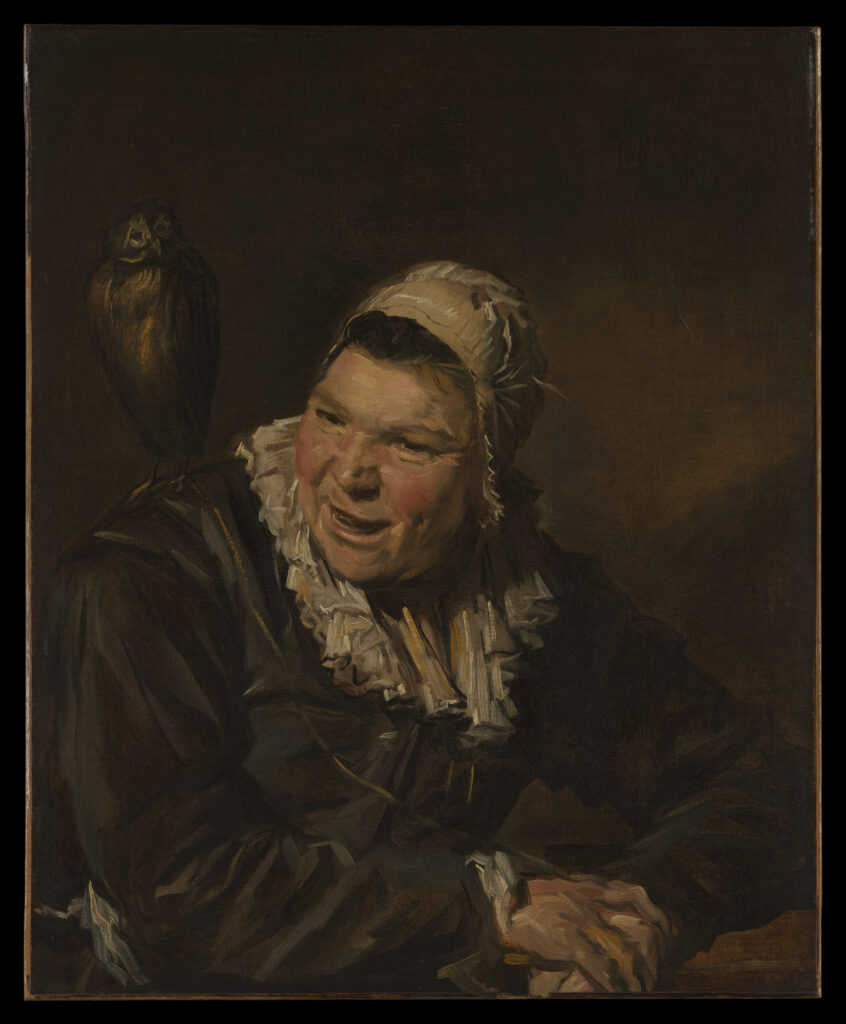
Style of Frans Hals, Malle Babbe, 17th century, The Metropolitan Museum of Art, New York, NY, USA.
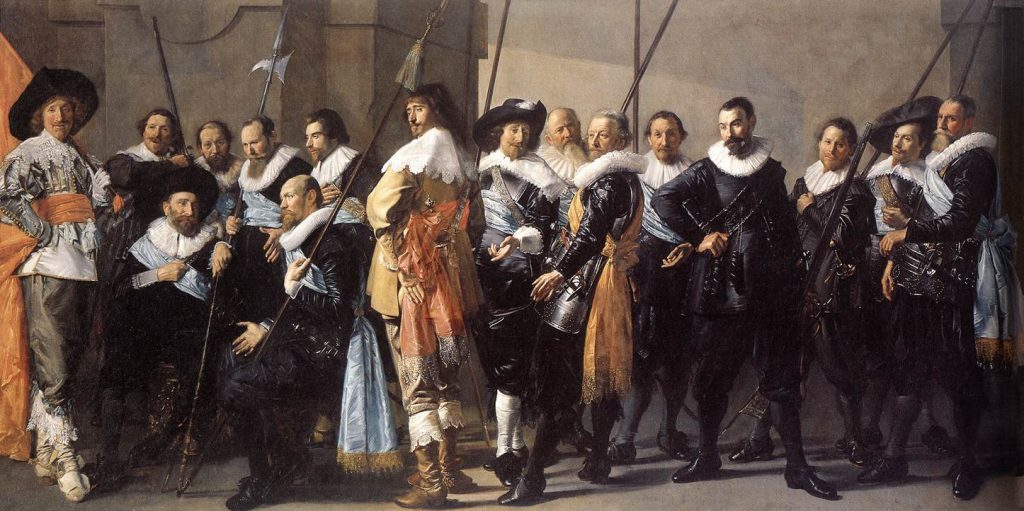
Frans Hals (and Pieter Codde), The Meagre Company or Officers and Other Guardsmen of the XIth District of Amsterdam, under the Command of Captain Reijnier Reael and Lieutenant Cornelis Michielsz Blaeuw, 1637, Rijksmuseum, Amsterdam, The Netherlands.
Apart from individual portraits, Hals was commissioned to paint “group portraits” of civic guards or regents and regentesses. They often appeared seated half-length in elegant but somber attire; the latter indicates the sitters’ Protestant faith.
Rarely a painter from another city was commissioned to paint a civic guard portrait. The Meagre Company, one of Hals’ six militia men pieces, depicts members of the Crossbow Civic Guard from Amsterdam. They probably regretted their decision, as Hals did not complete the portrait due to logistical problems and disagreements with his clients. Eventually, Pieter Codde was paid to finish the figures on the right of the painting.
Why the title Meagre Company? It got the name while hanging next to a series of paintings in Amsterdam’s town hall in 1758, where the sitters of this painting look “so withered and slender that one justifiably can call them the meagre company.”
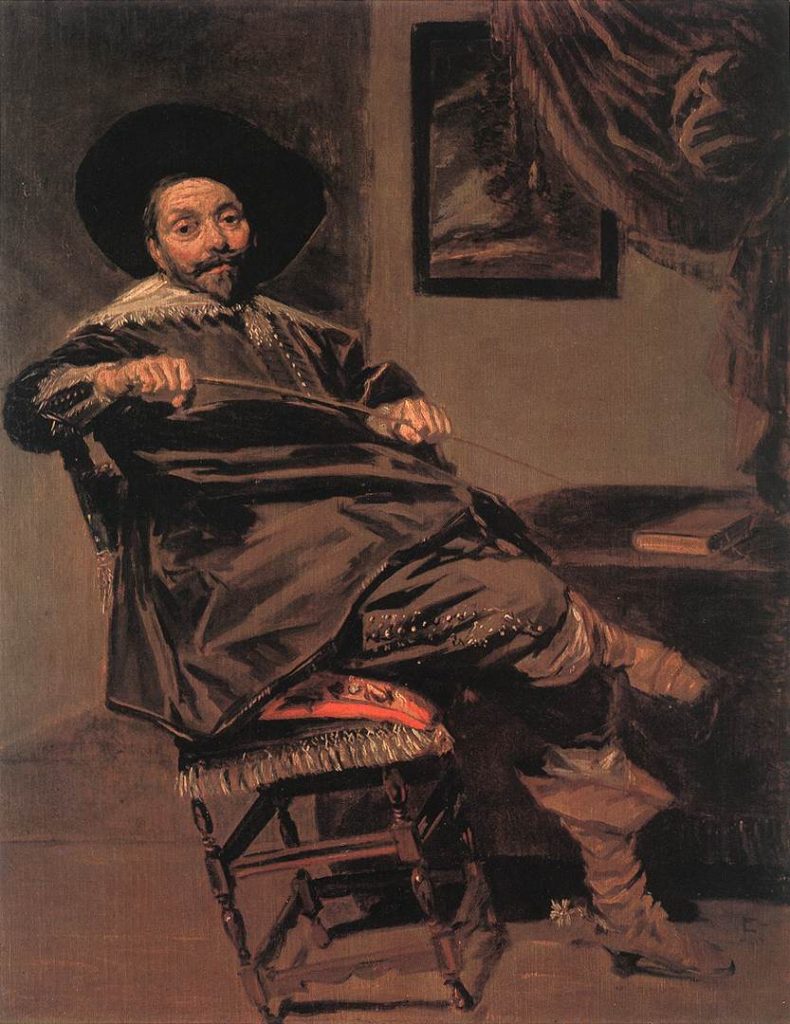
Frans Hals, Portrait of Willem van Heythuysen, ca. 1653, Royal Museums of Fine Arts of Belgium, Brussels, Belgium.
This full-figure portrait is a remarkable example of Hals’ skill in conveying the energy and motion of the sitter. Willem van Heythuysen was a wealthy Haarlem cloth merchant depicted by Hals earlier in 1625 in his only full-length single portrait where we can see him as an extremely confident bachelor. Almost 30 years later, Van Heythuysen seems much more relaxed and playful with his posture while tilting on his chair.
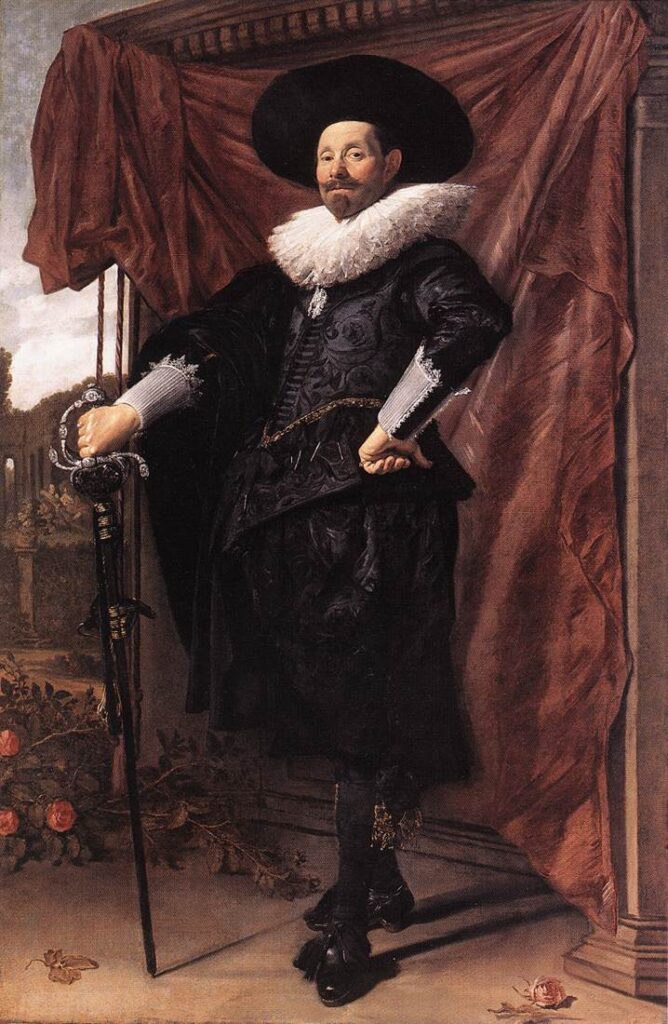
Frans Hals, Willem van Heythuysen Posing with a Sword, 1625, Alte Pinakothek, Munich, Germany.
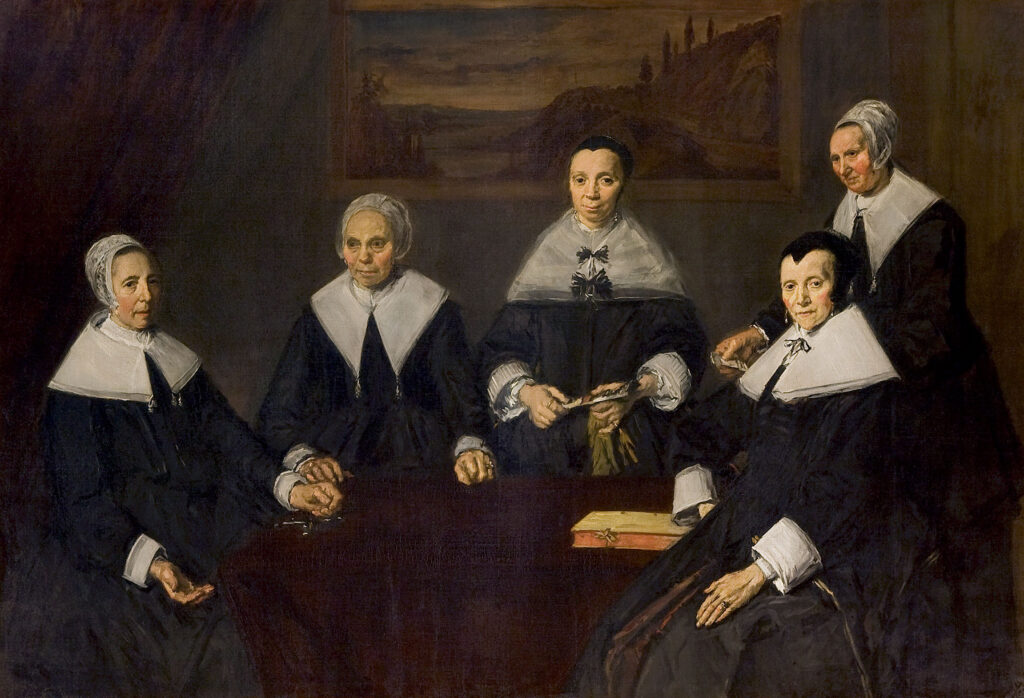
Frans Hals, Regentesses of the Old Men’s Almshouse, 1664, Frans Hals Museum, Haarlem, The Netherlands.
This later work is a group portrait of four regentesses of the Old Men’s Almshouse (Oude Mannenhuis), an institution accommodating older men. The picture forms a pendant with the Regents of the Old Men’s Almshouse (1664). These are the last known paintings Hals made before his death in 1666.
The striking naturalism in how Hals approached women’s faces and hands reveals a lifetime of experience handling paintbrushes as well as his deep understanding of the human condition. In 1902, American artist James Abbott McNeill Whistler was so impressed by this very painting that he climbed his way under the railing for a closer look.
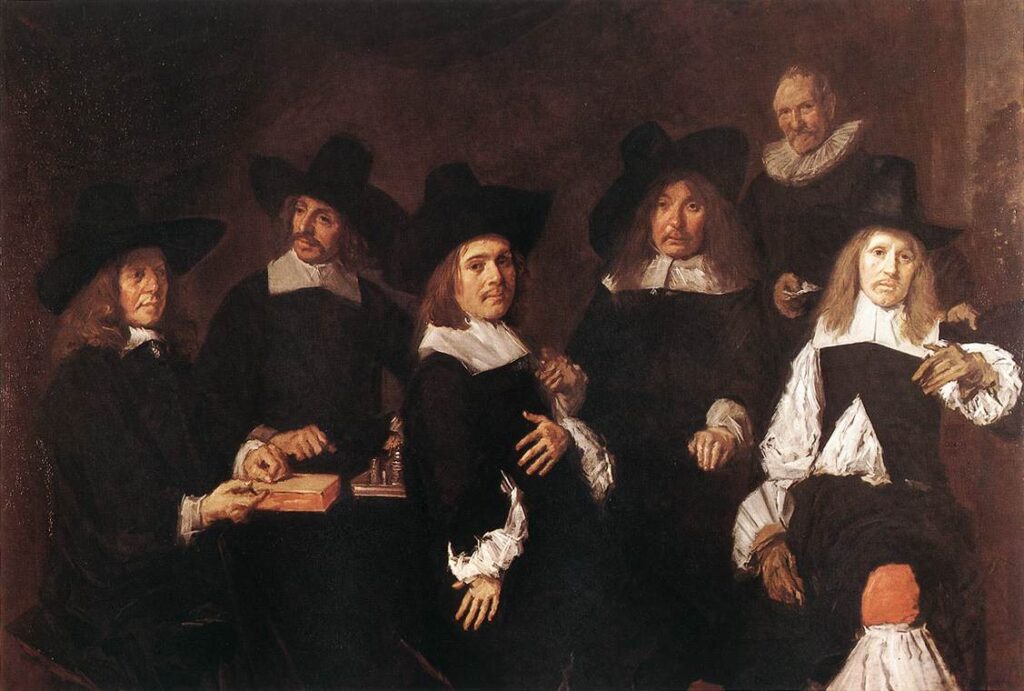
Frans Hals, Regents of the Old Men’s Almshouse, 1664, Frans Hals Museum, Haarlem, The Netherlands.
Hals passed away in 1666. As a testament to his lasting influence and legacy, the artist found his final resting place in Haarlem’s Grote Kerk, where he lies buried to this day. The Dutch artist belongs to the pantheon of the most influential painters, including but not limited to the Dutch Golden Age. He is well-known among Western artists overall. Today, you can see his most important works at the Frans Hals Museum in Haarlem and the Rijksmuseum, Amsterdam, where two of his paintings will be on view in the famed Gallery of Honour.
Now you have a unique chance to see a comprehensive exhibition presenting some 50 of Frans Hals’ greatest works in three locations: The National Gallery, London (30 Sep 2023–21 Jan 2024), Rijksmuseum, Amsterdam (16 Feb 2024–09 Jun 2024), and Gemäldegalerie, Berlin (12 Jul 2024–3 Nov 2024).
This exceptional show will present a range of paintings that are rarely presented abroad, such as civic guard portraits from the Frans Hals Museum or the Laughing Cavalier from the Wallace Collection.
If you wish to learn about Frans Hals in greater detail, order the exhibition catalog here.
B. Cornelis, F. Lammertse, J. Rinnooy Kan, J. van der Veen, Frans Hals, 2023. Exhibition Catalogue: London, Amsterdam & Berlin 2023-2024.
DailyArt Magazine needs your support. Every contribution, however big or small, is very valuable for our future. Thanks to it, we will be able to sustain and grow the Magazine. Thank you for your help!